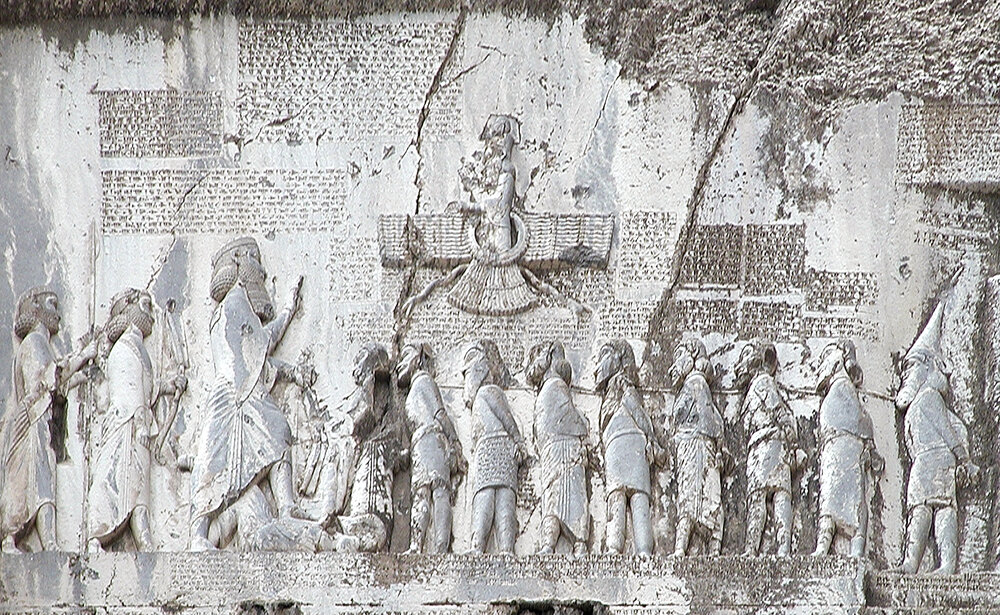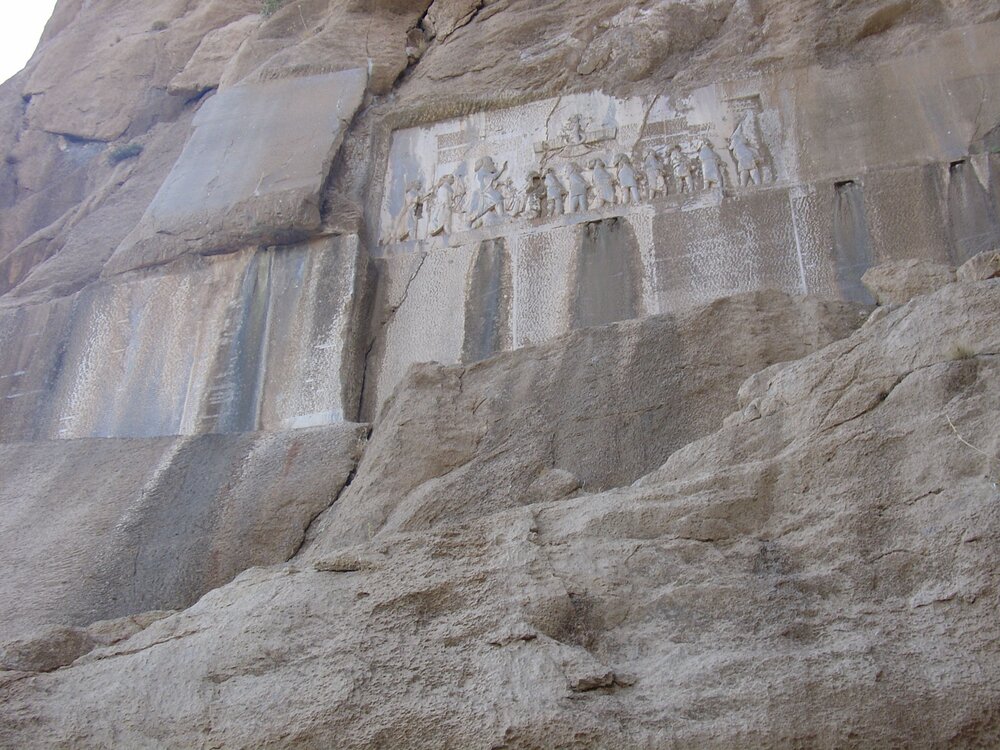Iran (IMNA) - The inscriptions, written in three ‘lost’ languages (Elamite, Akkadian and Old Persian) provided a key for decrypting cuneiform scripts, just as the Rosetta Stone did for Egyptian hieroglyphics. Unfortunately, the inscriptions and the key feature of Darius remain hidden behind scaffolding. However, the site is quite scenic to explore, with other scattered carvings and a crumbling caravanserai with chaykhaneh.From the entrance gate you'll pass a club-wielding little Hercules statue from 148 BC (albeit with recently replaced head) sitting on a rocky ledge. A little further is a very eroded Parthian relief of Mithrades II, partly overwritten by a 17th-century Arabic inscription by Sheikh Alikhan.

The main relief (which you aren't able to see) is 100m up the cliff and has Darius holding his bow and standing on the chest of a vanquished figure. Other bound figures are on his right and a farohar (or Faravahar) – a winged Zoroastrian ‘angel’ denoting purity – hovers overhead. The cuneiform inscriptions surround the Darius feature and detail the history of his conquests.In 1835, eccentric British Army officer Henry Rawlinson bemused locals by dangling for months over the abyss to make papier-mâché casts of the cuneiform. It was these casts that allowed the eventual breakthrough in deciphering the inscriptions. Unesco recognised the importance of the texts by listing Bisotun in 2006.If you keep walking past the scaffolding, you'll come to the sheer wall of Farhad Tarash, a popular rock-climbing site. Follow a path up to the base of the climbs for an excellent view back across the valley.

Lonelyplanet


Your Comment